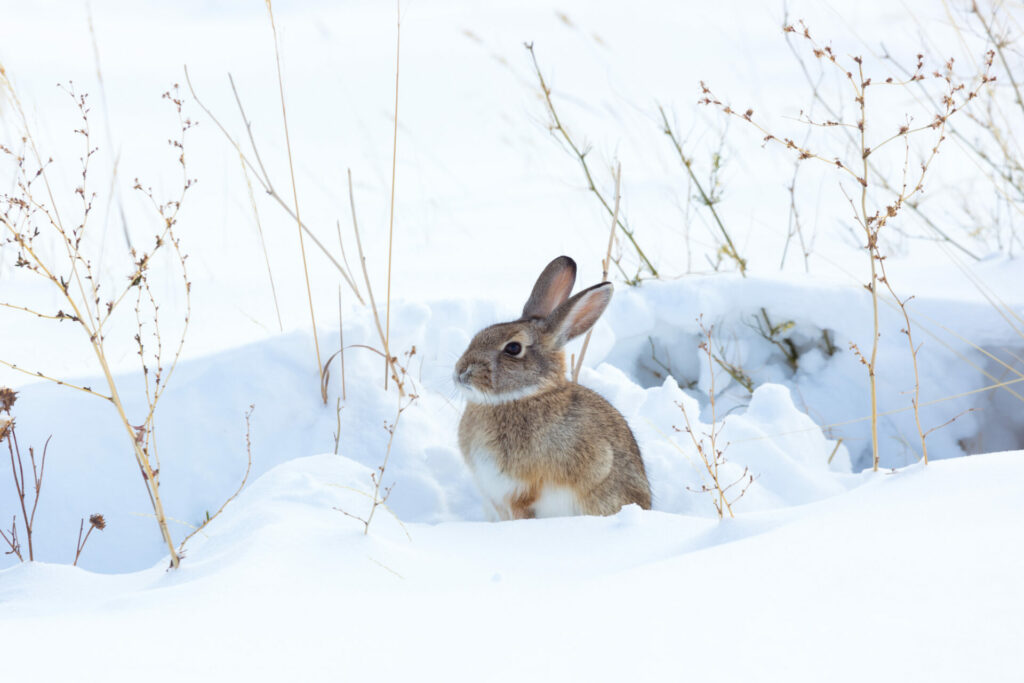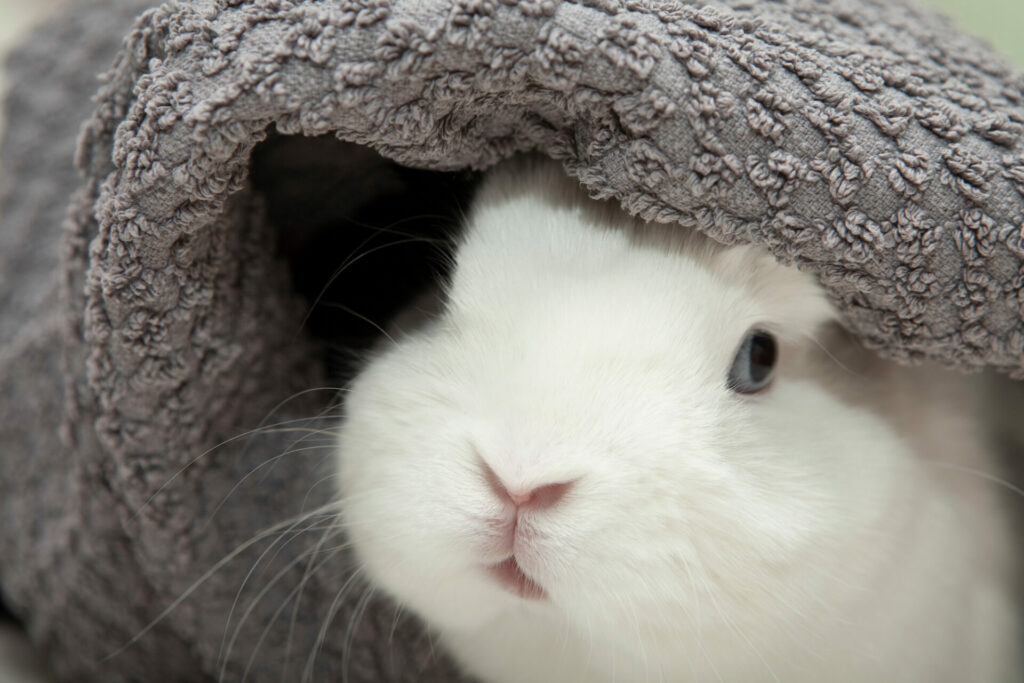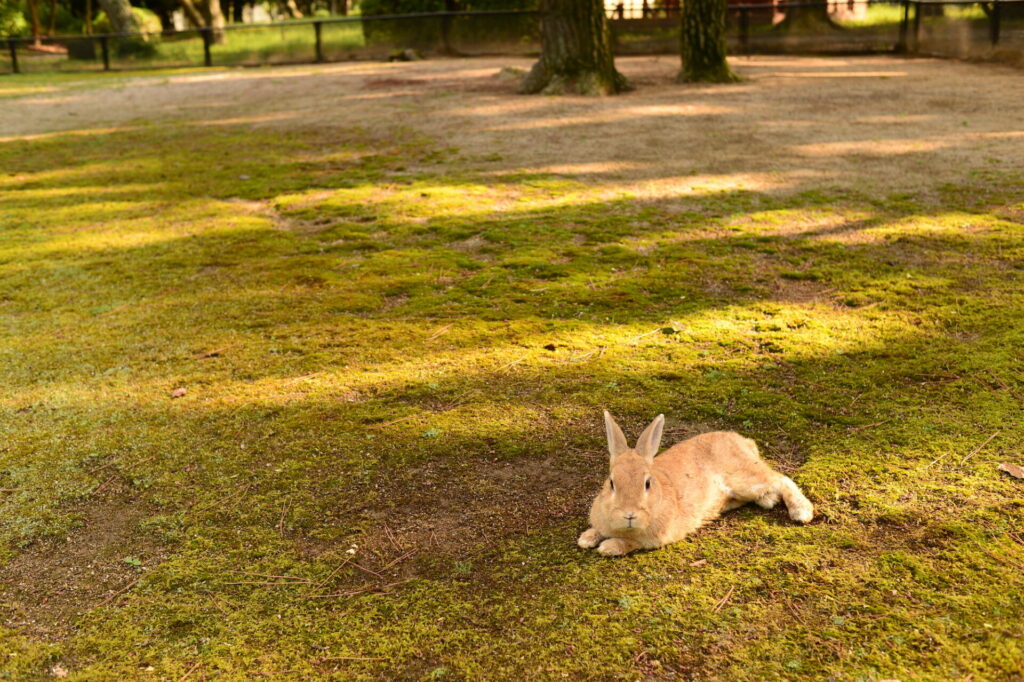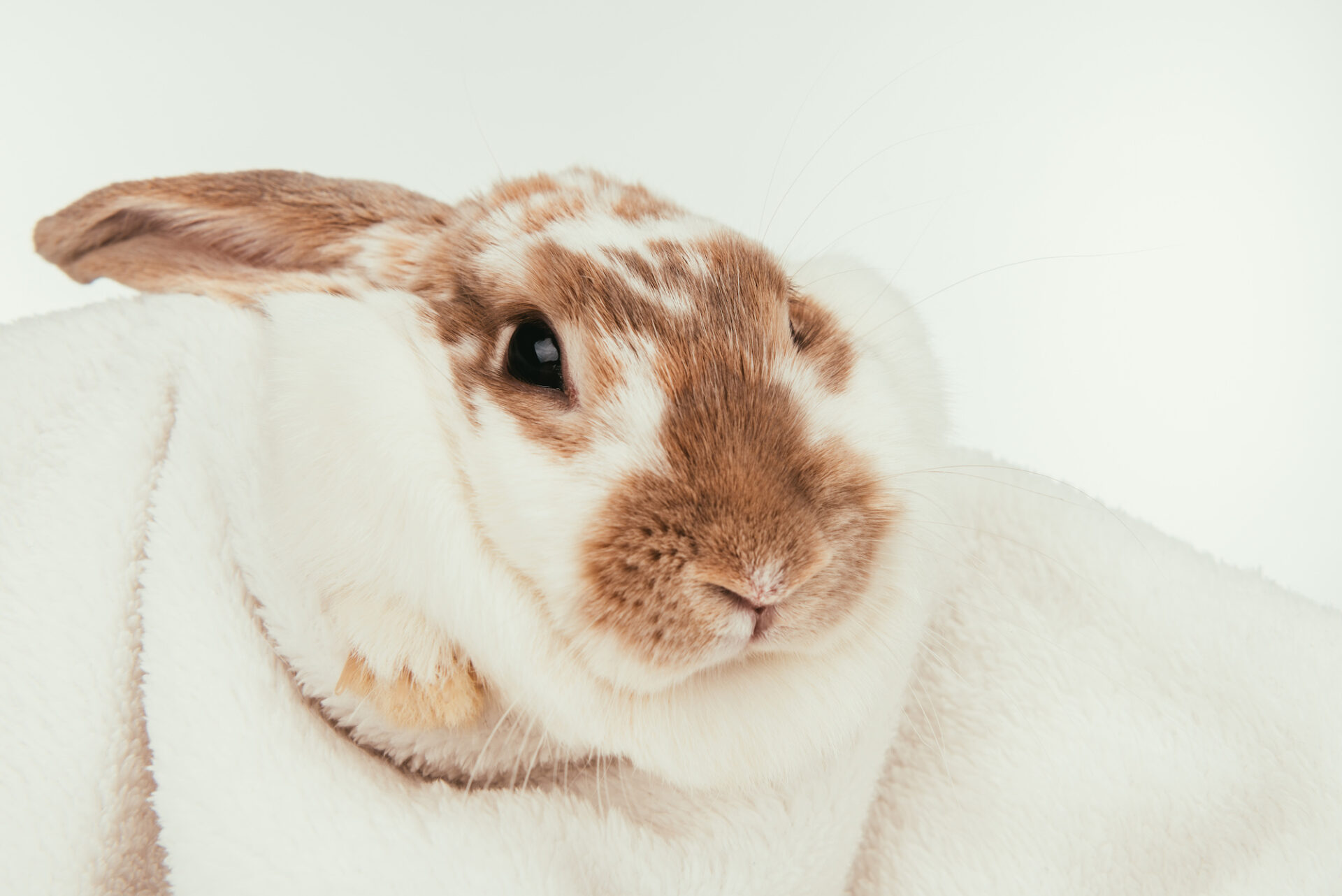Rabbits do get cold at night in certain situations. If your rabbit lives in an outside hutch, it should be properly insulated so it’s kept warm, dry, and draught-free. If it isn’t, your rabbit is at risk of getting sick and suffering through long, cold nights.
Any temperature below 30 degrees Fahrenheit (-2 degrees Celsius) should set warning bells ringing. This is the point where your rabbit will feel the cold and need to quickly get warmer.
They do have thick fur coats designed to insulate them and techniques to keep warm at night-time. Some of these are instinctive but most of the ways to stay warm will require intervention from their owner.
Read on to learn more about keeping rabbits when it’s cold!
Signs of a Cold Rabbit

If your rabbit is cold, there are a few common signs you might spot that indicate a problem. They’ll usually be accompanied by drastic changes in behavior and require immediate attention to help warm them up.
You might notice your rabbit:
- Has red and swollen eyes.
- Isn’t eating normally.
- Is lethargic (not moving much).
Other signs include sneezing and depression. Though these aren’t exclusive to your rabbit being cold, along with one or more of the symptoms above it can give you a better idea of what’s wrong with your rabbit.
Your rabbit could be cold from extreme temperatures, or from having an underlying illness. If you suspect that your rabbit is ill, hold the back of your hand against their ears or paws to check their temperature.
How to Warm a Rabbit Up

If you know your rabbit is cold, there are a few things that you can do to help them to get and stay warm. Their coats usually thicken up in the winter, but they’ll sometimes need extra help to fight off the cold.
To help your rabbit get warm, try:
- Wrapping them up: A blanket or towel can go in their hutch to provide an extra layer. You can also get or make a hidey-hole lined in blankets for them to sleep in.
- Insulating their hutch: Make sure that it’s waterproof and as warm as can be. You can get fitted waterproof covers that insulate the hutch, allow ventilation and they usually have clear panels to let your rabbit see outside.
- Bringing them inside: If your rabbit is too cold outdoors, bringing them in will provide much-needed relief from the elements. If the temperature is sharply different, try bringing them into a garage or shed first so they can get used to it gradually.
- Drying them: If your rabbit is wet, they’ll struggle to dry their thick coat. You can gently rub them with a towel or use a hairdryer and the lowest setting to dry their fur.
Tips on Keeping Rabbits in Cold Places

If you live somewhere that gets super cold at night, your furry friend might be uncomfortable and need your help to get warm.
Tips for keeping rabbits warm include:
- Give them extra thick bedding, and lots of it. This means extra hay and straw, perhaps lining the floor in newspaper or old blankets.
- Weatherproof their hutch. If they live outdoors, patch up any holes or windows that let draughts through.
- Make sure their belly is full from a healthy, balanced diet. That’ll give them plenty of energy to use to maintain their body temperature.
- Make sure there’s more than one rabbit so they can share body heat. In the wild, rabbits live in huge groups and huddle together for warmth.
- Consider bringing them indoors during cold weather. You could alternate indoors in the summer and outdoors in the winter.
- Make sure your rabbit’s coat is dry and there are no leaks to allow water into their hutch. A damp rabbit will usually stay damp and can lead to hypothermia or shock in severe cases.
- Put the hutch in a shed, garage, or sheltered part of your yard. This’ll provide an extra barrier against the elements.
If you live somewhere particularly cold, you should consider how you’ll keep your rabbit warm.
Can Rabbits Be Too Hot?

As well as being too cold, it can go the other way, and your rabbit overheats. In particularly bad cases, rabbits can get heat-stroke and require emergency vet treatment.
To avoid your rabbit overheating, you can:
- Keep your rabbit (and their hutch) out of direct sunlight.
- Get a fan, but this shouldn’t point directly at your rabbit. Introduce it slowly so they’re not startled by the noise.
- Use a damp towel or flannel around their body to cool them down, make sure that you don’t submerge your rabbit in water.
- Give them ice cubes in water to keep them hydrated.
- Invest in a heating mat – you can pick these up from most pet stores.
- Groom your rabbit, removing loose fur will release some heat.
- Use a damp cloth on your rabbit’s ears.
There’s definitely a happy medium for your rabbit’s temperature. You’ll need to monitor your rabbit in extreme weather to make sure that they’re comfortable and not at risk of either freezing or overheating.
Related Questions
Do Wild Rabbits Get Cold?
No, wild rabbits don’t get cold. They usually live underground in their warrens where temperatures hardly vary between summer and winter. Groups of rabbits will huddle together to share body heat and usually don’t get cold at night for this reason.
Can I Keep Rabbits Outside in the Winter?
Yes, it is possible to keep your rabbits outside all year long (including the winter), but only if you take appropriate measures. This includes making sure that they have a dry, insulated shelter with thick walls and plenty of bedding. It’ll need to be safe from predators and you’ll need to clean it daily, attend to your rabbits, and make sure they have enough space to stretch their legs – even if it’s cold for you to go outside.
Can Rabbits Die From Cold?
Yes, rabbits can die from being too cold. This can be from developing an illness related to being cold or from freezing. It is extra important to protect your rabbits from the cold. Even though wild rabbits can survive in cold weather, domesticated rabbits often need extra help to keep them warm and safe.
How Do I Keep Baby Rabbits Warm at Night?
Baby rabbits are especially vulnerable, and your help could be the difference in life and death in keeping them warm and healthy. If they’re hardly moving, you could put them on your skin to use your body heat. You could also use heating pads or warm towels (from the dryer) to wrap them up.
